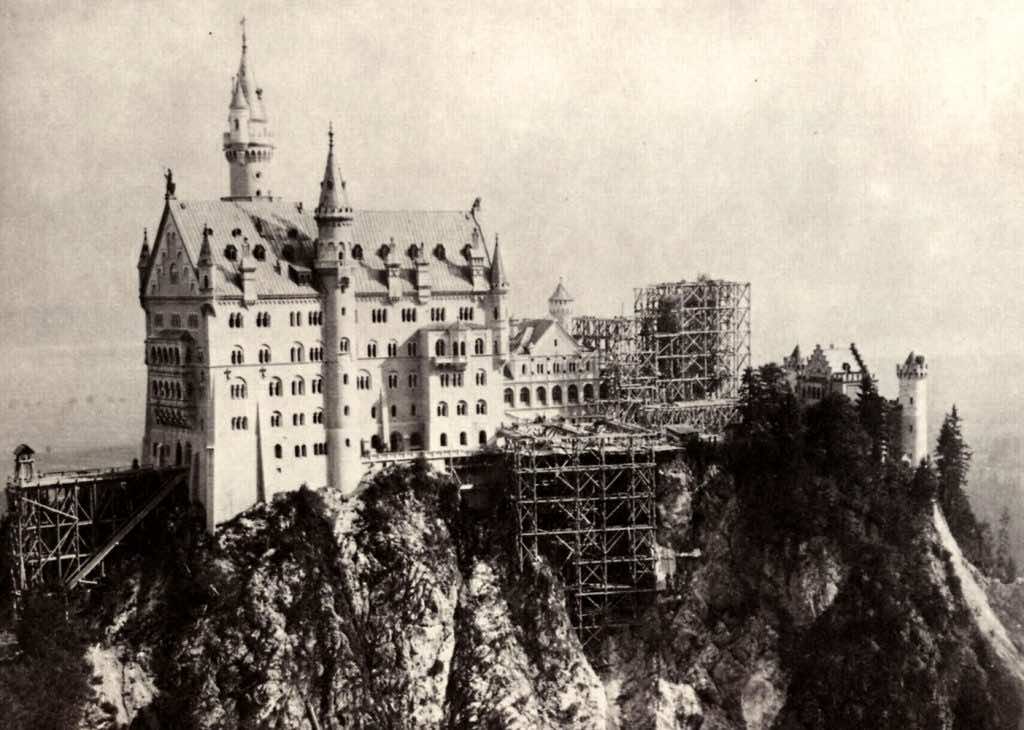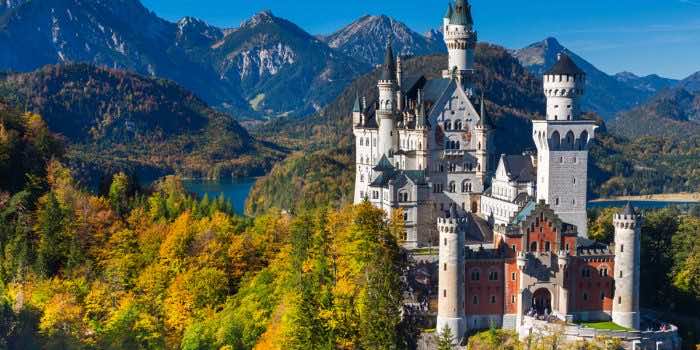Nestled in the hills of Bavaria, southern Germany is one of the most picturesque castles in all of Europe. Schloß Neuschwanstein, or “New Swan Stone Castle,” was the fantastical creation of King Ludwig II – a monarch who dreamed of creating for himself an ideal medieval palace, nestled in the Alps. A castle built to pay tribute to both an idealized image of a romantic medieval past and Germanic mythology and heroes as expressed by Wagner in his operas, of whom the King was a patron. Though designed to represent a 13th-century Romanesque Knight’s castle, Neuschwanstein was a thoroughly 19th-century project, constructed using industrial methods and filled with modern comforts and conveniences; indeed, without the technological advancements of the time, Ludwig could never have escaped into his medieval fantasy.
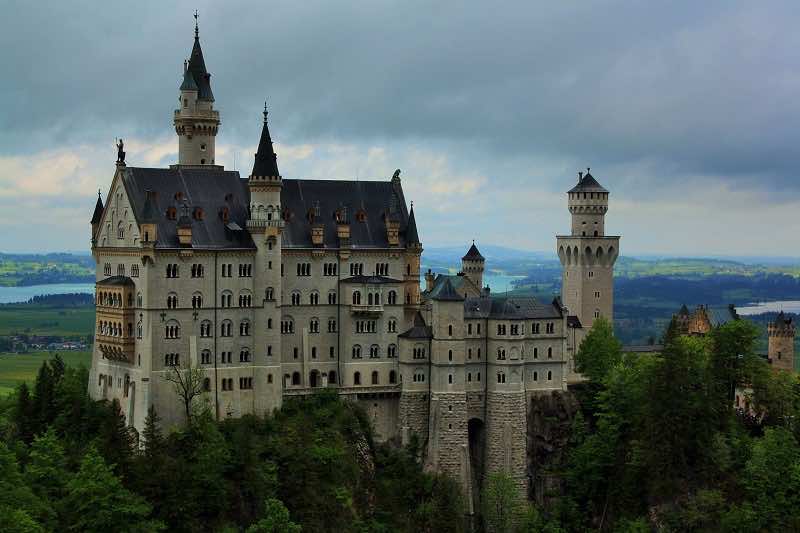
The seeds of Ludwig’s dream were sown during his childhood. The young Prince spent his summers in the nearby castle of Hohenschwangau, itself a reconstruction built by his father Maximilian II in the 1830s. Built over medieval ruins discovered by Maximilian during a hunting trip, Hohenschwangau was one of the first Romantic revival castles built in what would eventually become Germany; its combination of English Gothic styling with contemporary conveniences would serve as a formative influence for Ludwig’s own castle just across the valley.
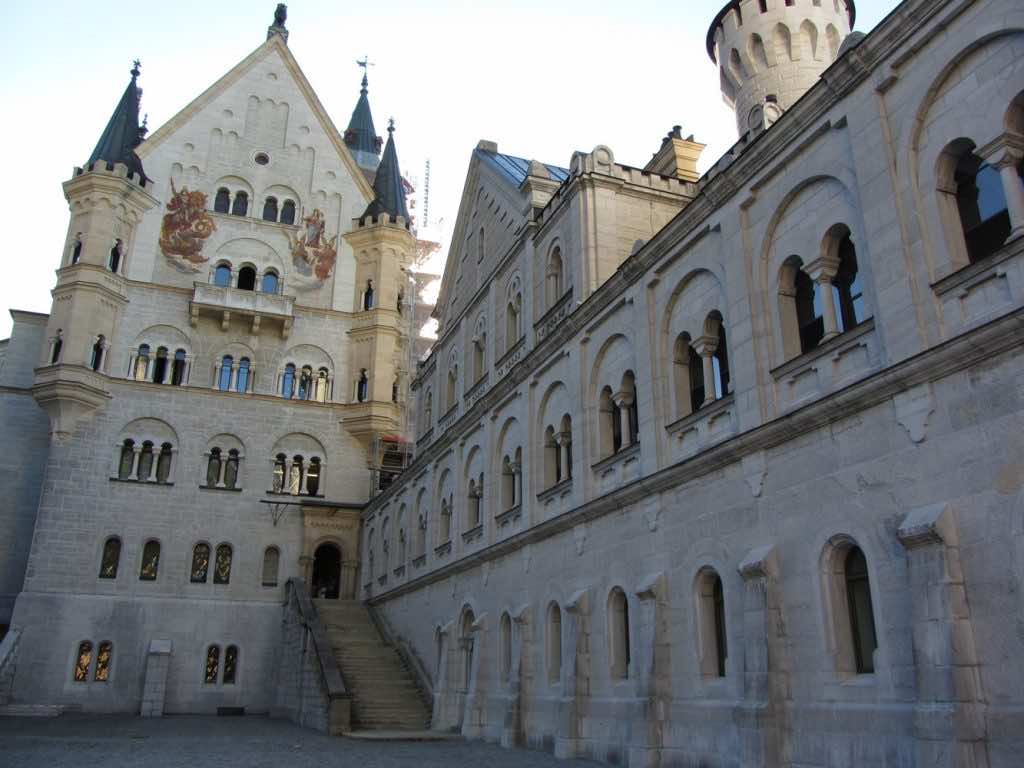
Neuschwanstein, as envisioned by Ludwig and illustrated by the scenic painter Christian Jank, was an idealized Gothic castle. Ludwig’s visit to a contemporary reconstruction of the Wartburg Palace, however, saw the concept shift to a larger Romanesque castle with multiple structures leading to a five-story royal residential building, or palas. When the first foundation stones were laid in September of 1869, Ludwig fully expected to be living in his completed castle within three years. However, it would be four years before he could move into the gatehouse, which was, at that point, the only space ready for habitation. The palas was topped out another seven years later in 1880; Ludwig finally moved into his intended apartments in 1884.
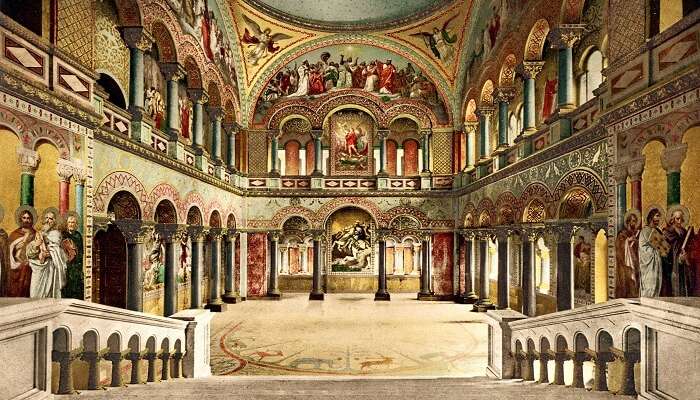
Soon after though the King was deposed due to his excessive spending and isolationist behavior and confined to the nearby Berg Castle where died shortly after. All in all he only lived in his beloved home for a total about 170 days. Nowadays it’s a major tourist destination that caters to millions of tourists each year.
